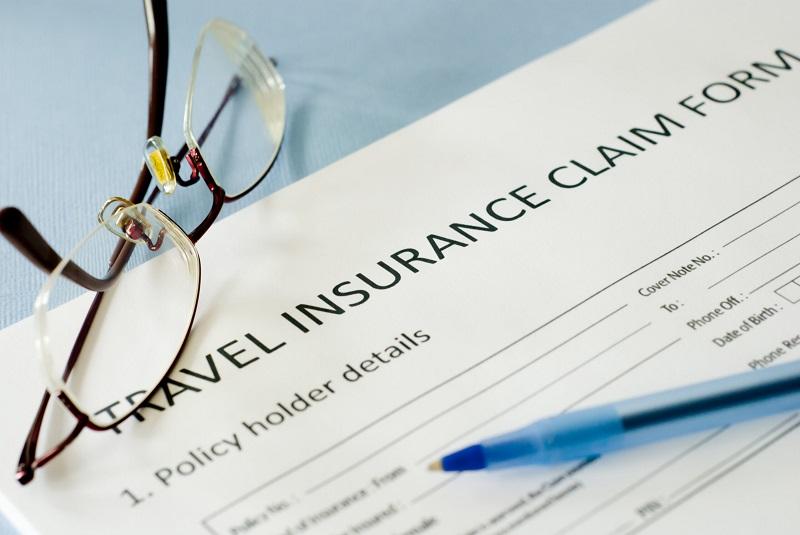Traveling abroad can be an exhilarating experience, offering new sights, cultures, and adventures. However, unexpected incidents such as medical emergencies, trip cancellations, or lost baggage can quickly turn a dream vacation into a stressful ordeal. This is where travel insurance comes into play.
Travel insurance is a safety net that provides coverage for unforeseen events during your travels. It can cover medical expenses, trip interruptions, and even emergency evacuations, offering peace of mind and financial protection. Having travel insurance is crucial for a number of reasons.
It ensures that you are not left with hefty medical bills in a foreign country, where healthcare costs can be significantly higher than in your home country. It also helps recover costs if your trip is disrupted or if your belongings are lost or stolen. In essence, travel insurance provides a safety cushion, allowing you to enjoy your travels with the assurance that you’re covered in case of unexpected events.
Understanding the Basics of Travel Insurance Claims
Claiming travel insurance while abroad can seem daunting, especially when you’re in an unfamiliar place and possibly dealing with a language barrier. However, understanding the procedures and necessary documents can simplify the process. Here’s a comprehensive guide to help you navigate the steps involved in claiming travel insurance in a foreign country.
Check Your Policy Details

Before making a claim, it’s essential to thoroughly understand your travel insurance policy. This includes knowing what events are covered, the coverage limits, and any exclusions. Policies vary widely, so knowing these details helps in determining whether your situation qualifies for a claim.
Most insurance providers offer coverage for medical emergencies, trip cancellations, lost or delayed baggage, and personal liability. However, some might exclude coverage for pre-existing medical conditions or specific activities, such as extreme sports.
Gather Necessary Documents
To successfully file a travel insurance claim, you need to provide specific documents. These documents serve as proof of the incident and the expenses incurred. While the exact requirements may vary depending on the insurance provider and the nature of the claim, some common documents include:
Medical Claims: If you’ve received medical treatment abroad, you’ll need medical reports, hospital bills, and a detailed statement from the attending physician. It’s crucial to collect all receipts and invoices related to your treatment.
Trip Cancellation/Interruption Claims: For claims related to trip cancellations or interruptions, you’ll need proof of the reason for the disruption. This could include a doctor’s note if the cancellation was due to illness, or a death certificate in the case of a death in the family. Additionally, you’ll need to provide receipts for any prepaid, non-refundable expenses, such as flights or hotel bookings.
Baggage Claims: In the case of lost, stolen, or delayed baggage, you’ll need a property irregularity report (PIR) from the airline, a police report (if applicable), and receipts for any essential items purchased while your baggage was delayed.
Personal Liability Claims: If you’re involved in an incident where you are held liable for damages or injuries, you’ll need a detailed description of the incident, police reports, and any legal documents related to the case.
Contact Your Insurance Provider

Once you’ve gathered the necessary documents, the next step is to contact your insurance provider. Most companies offer 24/7 helplines specifically for emergencies abroad. It’s important to inform them of the incident as soon as possible, as many policies have time limits for filing claims.
When contacting the provider, be ready to provide details of the incident, your policy number, and any initial documentation you’ve collected. After contacting your insurer, you’ll typically need to fill out a claim form. This form can usually be downloaded from the insurance company’s website or requested via email.
The claim form will require detailed information about the incident, including dates, locations, and descriptions of the events. Be thorough and accurate when completing this form, as any discrepancies could delay the processing of your claim.
Send Supporting Documents
Along with the claim form, you’ll need to submit the supporting documents you’ve gathered. Ensure that all documents are legible and organized. It’s advisable to keep copies of everything you submit, including the claim form and all supporting documents, for your own records.
Some insurers allow you to submit claims and documents online, while others may require physical copies sent via mail.After submitting your claim, it’s essential to follow up with the insurance provider. This helps ensure that your claim is being processed and that no additional information is needed.
Claims processing times can vary, but insurers usually provide an estimated timeline. If you haven’t received a response within this period, it’s appropriate to reach out for an update.
Understanding Payouts and Reimbursements

Once your claim is approved, the insurance company will process your payout or reimbursement. This can be done through direct deposit, a check, or sometimes via a credit to your account if the expenses were initially charged to your credit card. The amount reimbursed will depend on the coverage limits and any deductibles specified in your policy.
It’s crucial to review the payout statement carefully to ensure that all expenses have been accounted for and that there are no discrepancies.
Common Challenges and Tips
Claiming travel insurance in a foreign country can come with challenges, such as language barriers, differences in medical documentation, and local bureaucracy. Here are some tips to help streamline the process:
- Language Barriers: If you’re in a non-English-speaking country, it can be helpful to have documents translated into English. Some insurance companies provide translation services, or you may need to use a local translator.
- Keep Detailed Records: Always keep detailed records of your interactions with healthcare providers, law enforcement, and your insurance company. This includes names, dates, and any reference numbers provided during these interactions.
- Understand Local Laws: Be aware of local laws and procedures, especially concerning medical treatment and legal matters. This understanding can help prevent misunderstandings and ensure that you receive proper documentation.
- Stay Calm and Patient: Insurance claims can take time, especially when dealing with complex situations or large sums of money. Staying calm and patient will help you navigate the process more effectively.
Conclusion
Travel insurance is an invaluable asset when traveling abroad, providing coverage and support during unexpected situations. Whether dealing with medical emergencies, trip cancellations, or lost baggage, being well-prepared and informed can help you navigate the complexities of filing a claim in a foreign country. Ultimately, this allows you to focus more on enjoying your travels, knowing that you are protected against unforeseen events.



